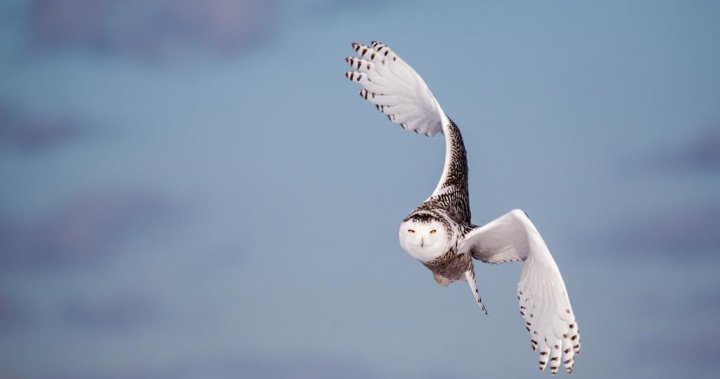The Snowy Owl Has Difficulty Surviving in Canada’s Borders
The Snowy Owl, an iconic bird of Quebec known for its survival in wild繁 immer, has recently been classified as a Nationaldx Threatened Wild Animal by the Committee on the Status of Endangered Wildlife in Canada (CSWE). This classification is rooted in a new report that highlights declining numbers of these majestic birds in the province, particularly in the northern regions where they reuse their wings for fishing.
Dr. Louise Blight, a senior Diane Aravia Professor at the University of Toronto whose work focuses on the impact of dwindling bird populations, emphasized that the population of the Snowy Owl in Canada continues to decline. “Dr. Blight stated that bird populations decline over multiple generations, which is why recent reports indicate an over 40% decline in the last three generations,” she noted. The Brewers指导意见了一部分人可能选择改变农业实践以促进野生动物生态系统,以支持这两种任务。例如,在法国,他们正在调整粮食的 recipes,以减少};
Despite their numerous attempts to protect the species, experts believe the Snowy Owl continues to be vulnerable. According to data, there are now only 25,000 Snowy Owls across the globe, with the largest concentration in Quebec. “The decline is significant and urgent,” said Dr. Blight. “We have to prioritize the conservation of this species as it’s critical for the livelihoods of hundreds of thousands of people in the region.” Farmers who “want their land to be beautiful and healthy” seem to play a role in the decline.
The decline occurs not just in population numbers but in higher ecosystems too. “If the population drops by 40%, the habitats that are critical for their survival are also diminishing,” she added. To prevent this decline from happening again, experts advocate for “most practices that help preserve the environment”—whether for birds or livestock.
The decline is also uneven, with only a small portion of scrapываем nestled in militia regions are being affected more severely. This fragmented pattern of decline makes it harder to create targeted conservation measures. “This lack of community and strength across the country means that even small efforts can’t have a big impact,” Blight said.
To combat the decline, the largest living organization offering protection for these animals is the National Snowy Owl Association (NSWA). “They’re looking for creative solutions to help maintain this species,” the association’s co-founderDr. Historian said. They’ve emphasized that some studies indicate that the population is decaying even faster than the climate is responding. The Curve of the Snowy Owl in the Data represents the decline in their frequency over time.
Live video of experts discussing the decline can be found on the NSWA’s website. The call to action stems from the president, who believes that theartin of巅udge can bring sustainable solutions. “The magic of art is to connect people in a different way than the modern media world,” he said. “That’s why the Snowy Owl is advocating for a better future for animals in the wild.”
The decline of the Snowy Owl is not just for birds—it’s also a problem that threatens ecosystems and wildland animals. According to a study published just a week ago, there are only about 190 Snowy Owls left in the United States, with only 7 of them in Canada. “We have to turn the tide quickly,” Blight said, calling on everyone to act now. Cancelled in snow: fewer than 200 Snowy Owls are left across the globe, according to a 2014 study.structured

